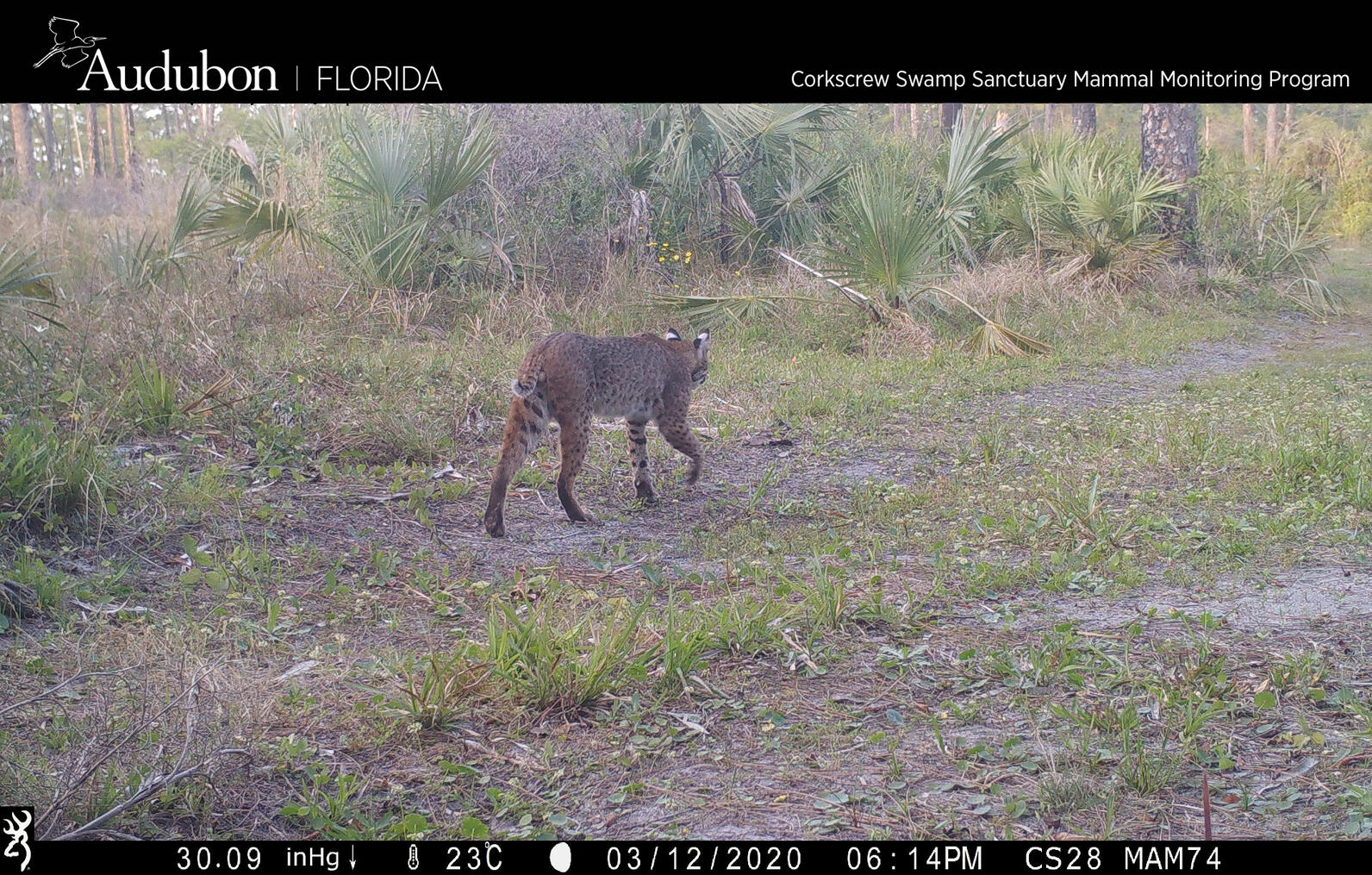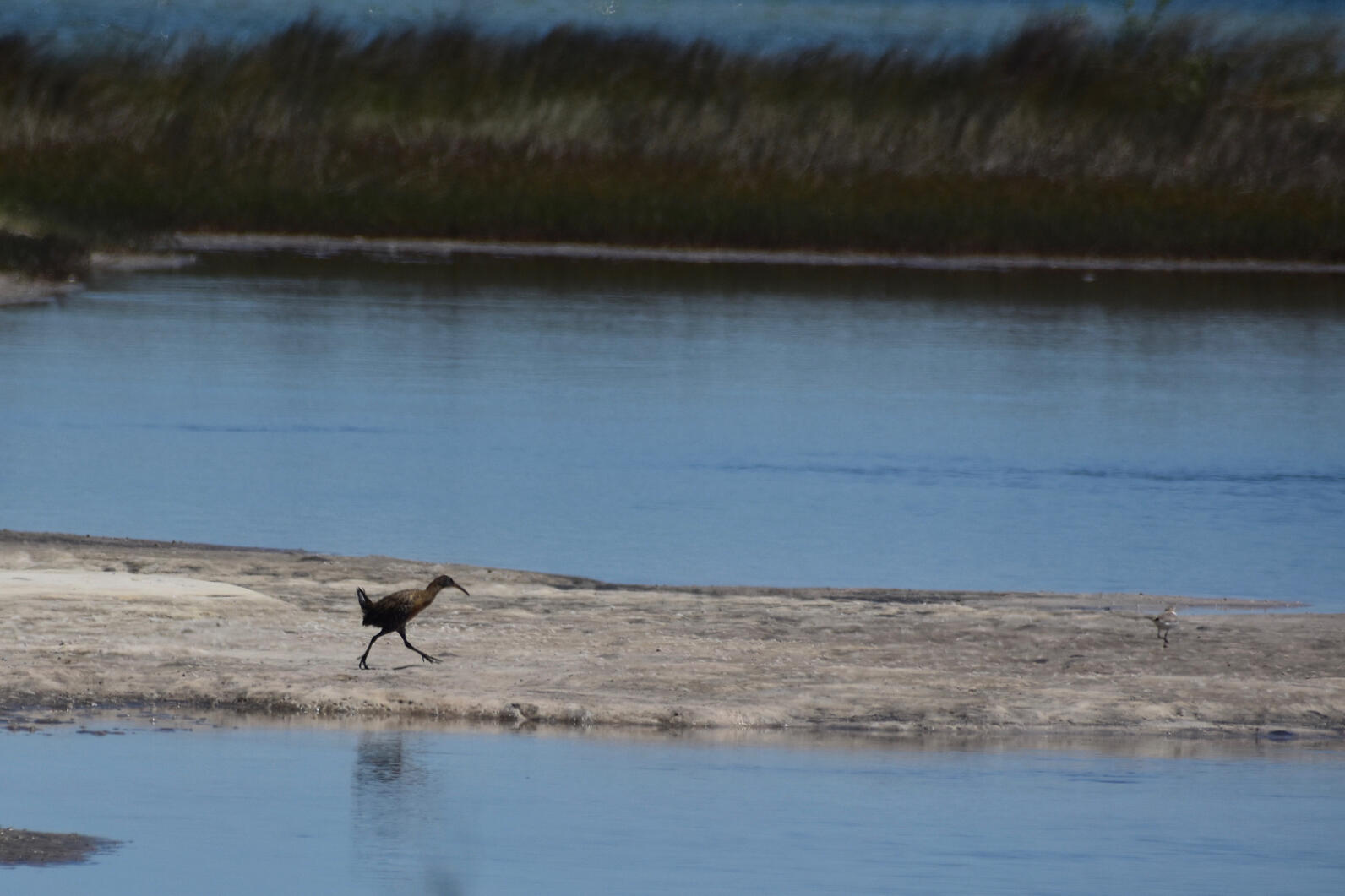As Floridians have been sheltering in place, beaches and natural spaces experienced a rare hiatus from human visitors. How did wildlife respond?
Sea and Shorebirds
Beach closures initially seemed positive for the birds, but prevented nest searching and posting by staff until we could gain access approval by municipal or state staff. Though the coastal team could not conduct field work for two weeks, the delay did not cause any known nesting failures. On Saturday, May 23, Audubon Florida’s volunteer program re-started with significant limitations at nesting sites in Santa Rosa, Pinellas, and Sarasota Counties.
Bobcats
Audubon’s Corkscrew Swamp Sanctuary has remained closed since mid-March to protect the safety of visitors, volunteers, and staff. The quieter boardwalk has been visited by several species considered to be shy — including Bobcats! These beautiful felines have been spotted more often on our trail cams, quite close to the boardwalk.

Clapper Rail
Rails are known for their secretive nature, spending most of their lives hidden in the marsh grasses they call home. In fact, most birders only hear their distinctive kek-kek-kek calls as they catch a quick glance of the chicken-like bird poking its head out from amongst the reeds.
In the Florida Panhandle, spring beach closures meant that public beaches along the Santa Rosa Sound remained empty of both people and pets. Without the human foot traffic, rails became more bold, and Audubon Florida coastal stewards spotted more than one out in the open!







